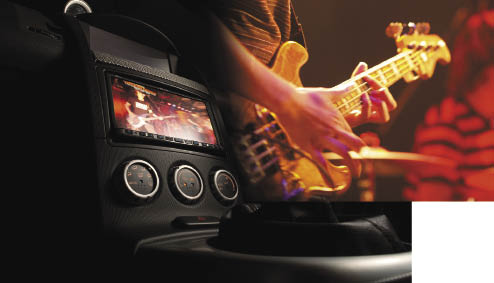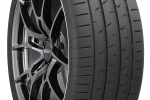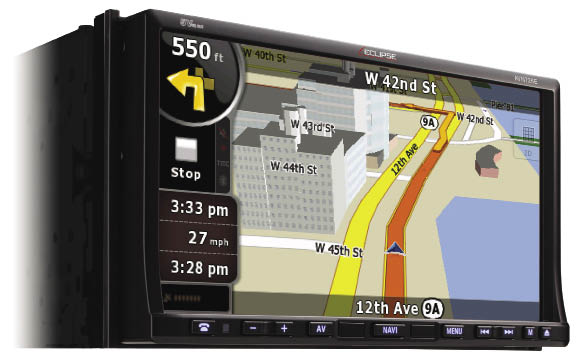On the Bench
After I had completed my listening, I moved the unit to my test bench and set about collecting the nitty-gritty performance data. I have to say I was a bit surprised to find that as I had  noted in the AVN4430, the preamp outputs fell a tiny bit short of the advertised 5 volts, the best I could manage without clipping was 4.8 volts. No big deal… but it’s not 5 volts as advertised. On a brighter note, the output impedance was outstanding, at a very low 21.5 ohms. Frequency response was within -3dB from 20Hz to 20kHz, and the signal to noise spec was fantastic, at better than -91dB on the pre-outs. This is among the quietest DVD players I’ve measured in a very long time. I also noted that with the tone controls set flat, the unit does not clip the pre-out signal even with the volume wide open and an all-bits high track used. It’s nice to see some emphasis still being placed on the important audio performance specs. Nicely done, Eclipse electrical engineers. Maybe a couple of you should give the guys in charge of the ergonomics and functionality a hand. A couple more raspberries too, the subwoofer (non-fading) outputs had about 1.3dB less output than the front/rear outputs, even with the internal volume setting maxed, and the crossover filter had a very strange shape, changing slope with frequency. The internal subwoofer filter was -3db at 40Hz, -6dB at 75Hz, -12dB at 180 Hz, and -24dB at 485Hz, and never really became asymptotic.
noted in the AVN4430, the preamp outputs fell a tiny bit short of the advertised 5 volts, the best I could manage without clipping was 4.8 volts. No big deal… but it’s not 5 volts as advertised. On a brighter note, the output impedance was outstanding, at a very low 21.5 ohms. Frequency response was within -3dB from 20Hz to 20kHz, and the signal to noise spec was fantastic, at better than -91dB on the pre-outs. This is among the quietest DVD players I’ve measured in a very long time. I also noted that with the tone controls set flat, the unit does not clip the pre-out signal even with the volume wide open and an all-bits high track used. It’s nice to see some emphasis still being placed on the important audio performance specs. Nicely done, Eclipse electrical engineers. Maybe a couple of you should give the guys in charge of the ergonomics and functionality a hand. A couple more raspberries too, the subwoofer (non-fading) outputs had about 1.3dB less output than the front/rear outputs, even with the internal volume setting maxed, and the crossover filter had a very strange shape, changing slope with frequency. The internal subwoofer filter was -3db at 40Hz, -6dB at 75Hz, -12dB at 180 Hz, and -24dB at 485Hz, and never really became asymptotic.
Conclusion
I’ve been a fan of Eclipse headunits for a long time. Generally speaking, they have traditionally been engineered with a bias toward high performance audio, and for me, that’s as it should be. This time, they have sent me one of their new double DIN, 7” motorized touch screen Navigation/DVD/CD/MP3/AM/FM/iPod units, the top of the line AVN726E. Priced at $1299.99 in the U.S., this unit represents the top end of automotive in-dash wizardry.
Related Articles
 Toyota unwraps GR GT supercar and GR GT3 racer
Toyota unwraps GR GT supercar and GR GT3 racer
 S30.world Launches "The Masterpieces" - Celebrating Nissan's S30 Platform
S30.world Launches "The Masterpieces" - Celebrating Nissan's S30 Platform
 Lexus LFA successor on the way?
Lexus LFA successor on the way?
 Mazda RX-7 successor on the horizon
Mazda RX-7 successor on the horizon
 MID WHEELS by RAYS - 2025 Product Catalog Release
MID WHEELS by RAYS - 2025 Product Catalog Release
 Toyo Tires Canada Introduces Toyo Proxes Sport 2 Max Performance Summer Tire
Toyo Tires Canada Introduces Toyo Proxes Sport 2 Max Performance Summer Tire





